What our architecture may lack in a set style and goals is compensated in its ability to harness flows of energy and information in its various transitions. By treating our architecture as a homogenous system we give it the potential for infinite personalization based on control over specific spatial parameters. These parameters will define processes and reasons for change in architecture rather than finite and ultimately outdated states.
Having said this, we cannot expect changes in our spaces and structures if the fundamental basis of architectural construction, the material, is still viewed as a sedentary element in our systems. A thorough understanding of smart materials and properties suitable for an adaptable architecture is therefore essential in gaining an understanding of their countless possibilities and limitations. In “Translated Geometries” we have been working with Shape Memory Polymer (SMP) in order to achieve a responsive architectural prototype. As our concept was based around the motif of architecture in transition, we are using a material that can change phase from an external and controlled stimuli. Our SMP (Veritex) is able to reach a ‘soft’ and rubbery state upon exposure to heat above its glass transition temperature of 62oC, at which point it can undergo vast geometrical deformations. Therefore, by wiring and embedding our SMP with constantan heat wires we are able to pick and choose specific applications of heat to our prototype. After a deformation is made, the material cools and stiffens (within 2 minutes) to hold the new shape. The use of SMP is minimized to perform as a structural joint in the material system of the geometry, that of a tessellated triangulated origami pattern. We place the laser-cut hexagonal SMP joint at the intersection of the pattern’s mountains and valleys to be able to control the overall geometrical deformations from these individual nodes. From the initial flat position of the homogenous structure it can be entirely heated and softened and then deformed into a desired position through the actuation force of pulling by many octocopter drones. The drones hold the desired shape until the SMP cools, at which point the new form is held. This process can be repeated indefinitely, as the structure is able to respond to a given environment or user`s preferences for various spatial configurations, a never-ending transformable multi-purpose space. These transitions, whether they are ongoing, or frozen in a specific time or setting, define the evolving personality of our new built environment.
CREDITS
Translated Geometires is a project of IAAC, Institute for Advanced Architecture of Catalonia
developed in the Master in Advanced Architecture in 2013-14 by:
Research team:
Ece Tankal http://cargocollective.com/ecetankal
Efilena Baseta http://cargocollective.com/efilenabaseta
Ramin Shambayati http://raminshami.com/Translated-Geometries
Faculty: Areti Markopoulou
Tutors: Alexandre Dubor, Moritz Begle
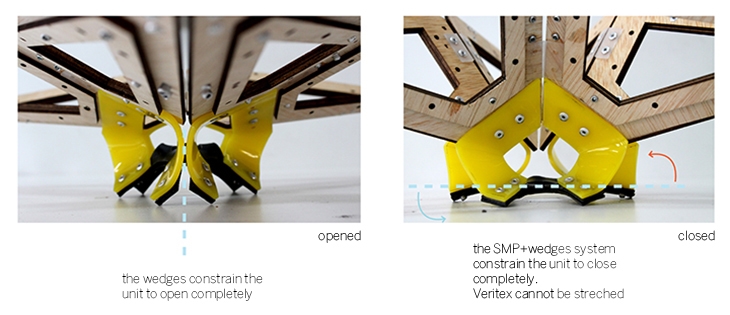 WEDGES
WEDGES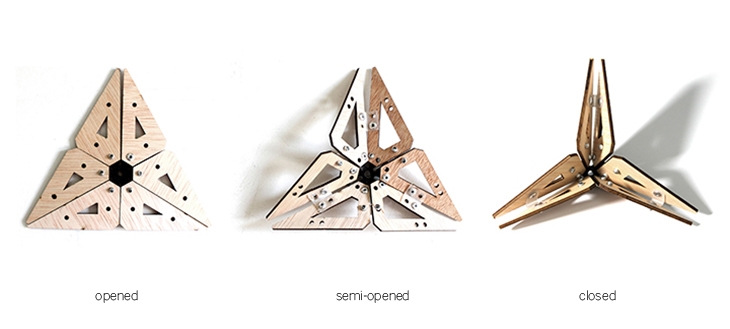 UNIT OPENED TO CLOSED
UNIT OPENED TO CLOSED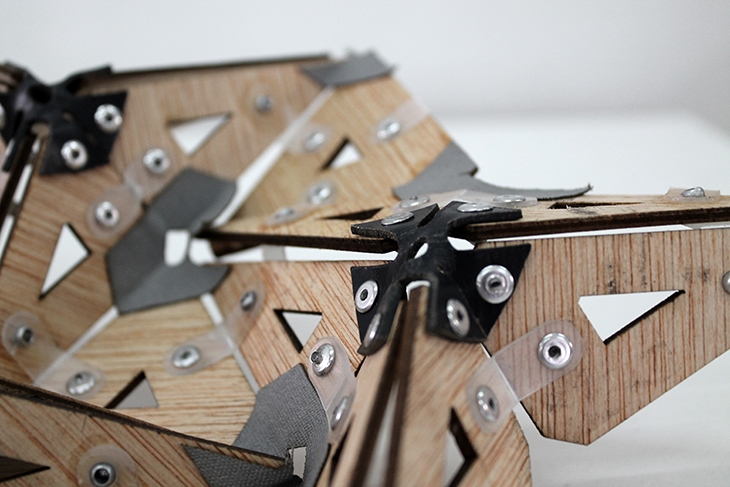 TEST PROTOTYPE
TEST PROTOTYPE STRUCTURE SMP POSITION
STRUCTURE SMP POSITION SIMULATION
SIMULATION RENDER JOINT
RENDER JOINT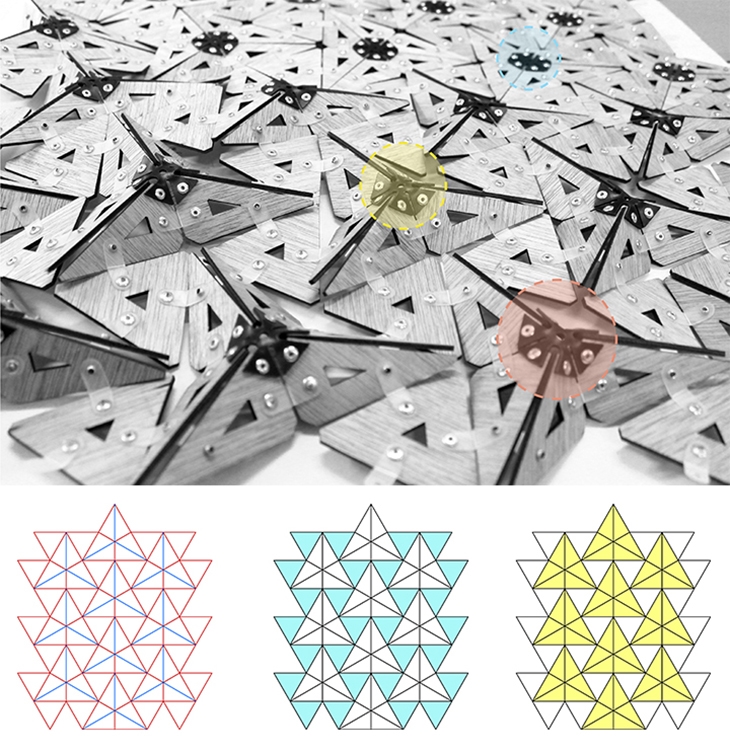 PROTOTYPE 1-3
PROTOTYPE 1-3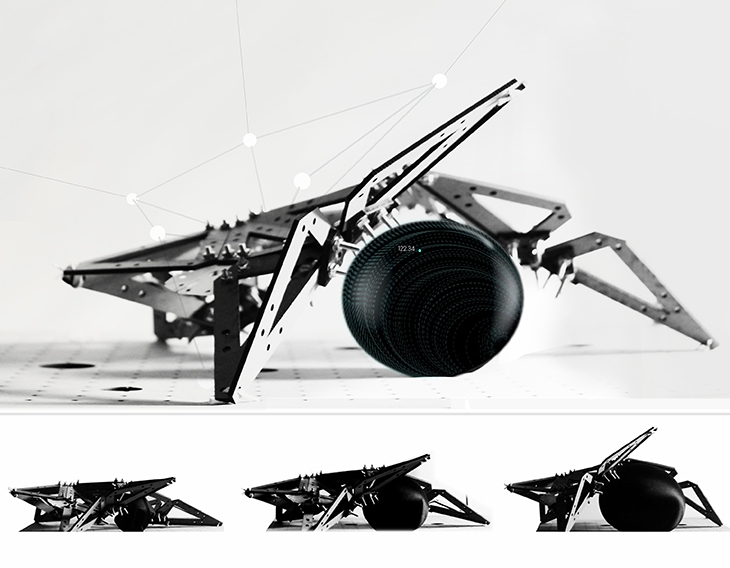 OVERSMPBENDERS
OVERSMPBENDERS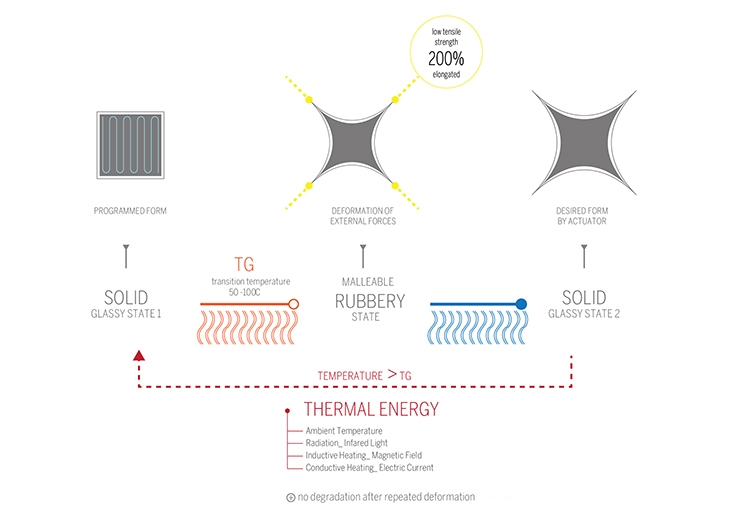 MATERIAL SYSTEM DIAGRAMMS
MATERIAL SYSTEM DIAGRAMMS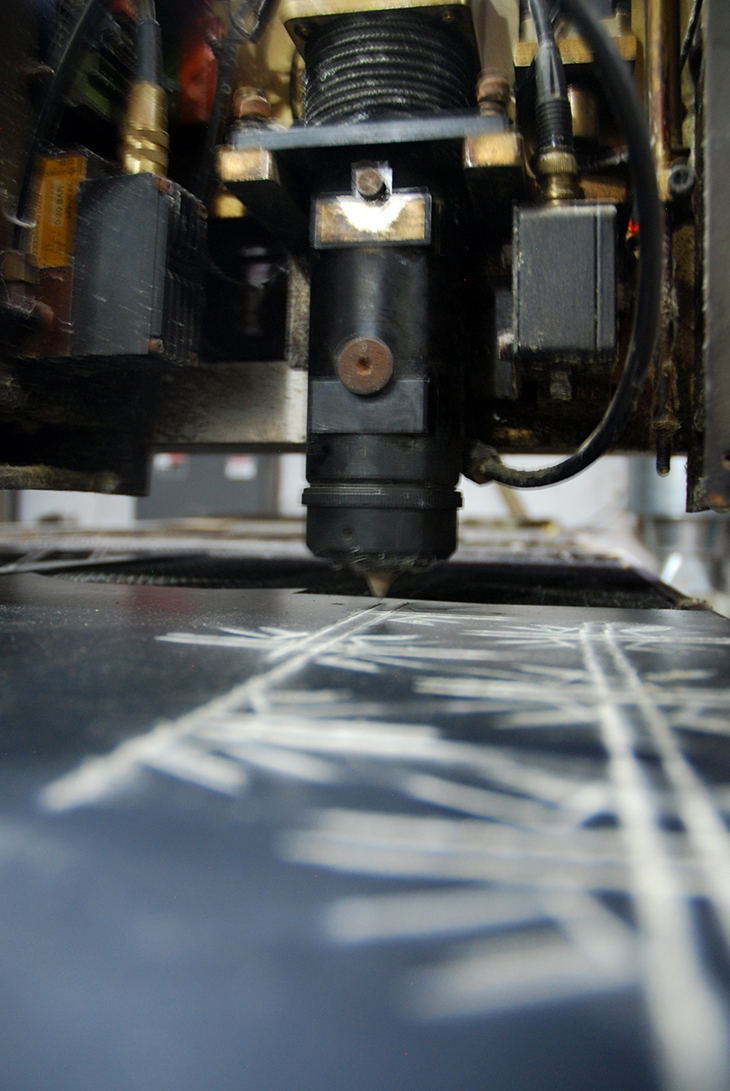 LASER CUT
LASER CUT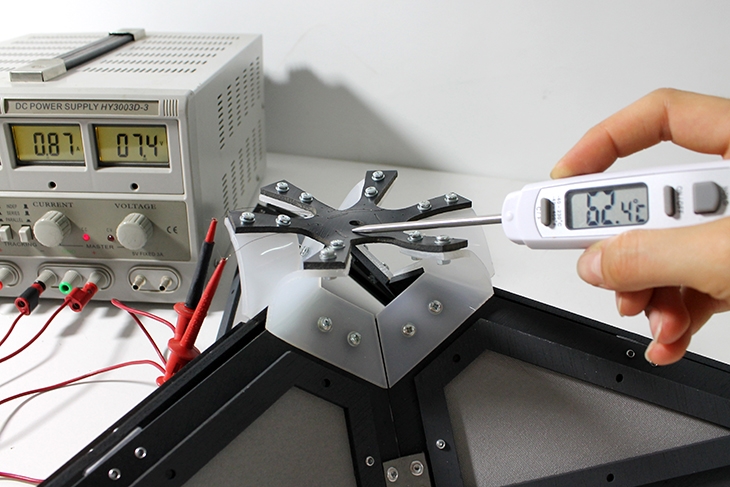 TESTING
TESTING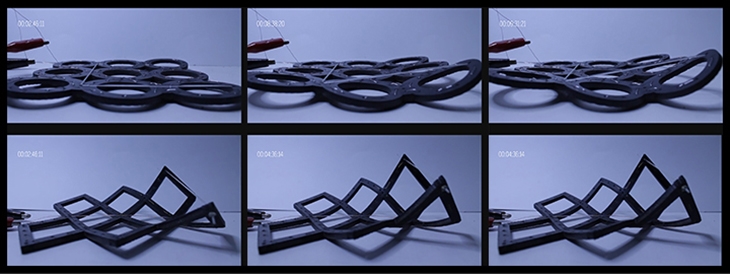 GRID EXPERIMENT
GRID EXPERIMENT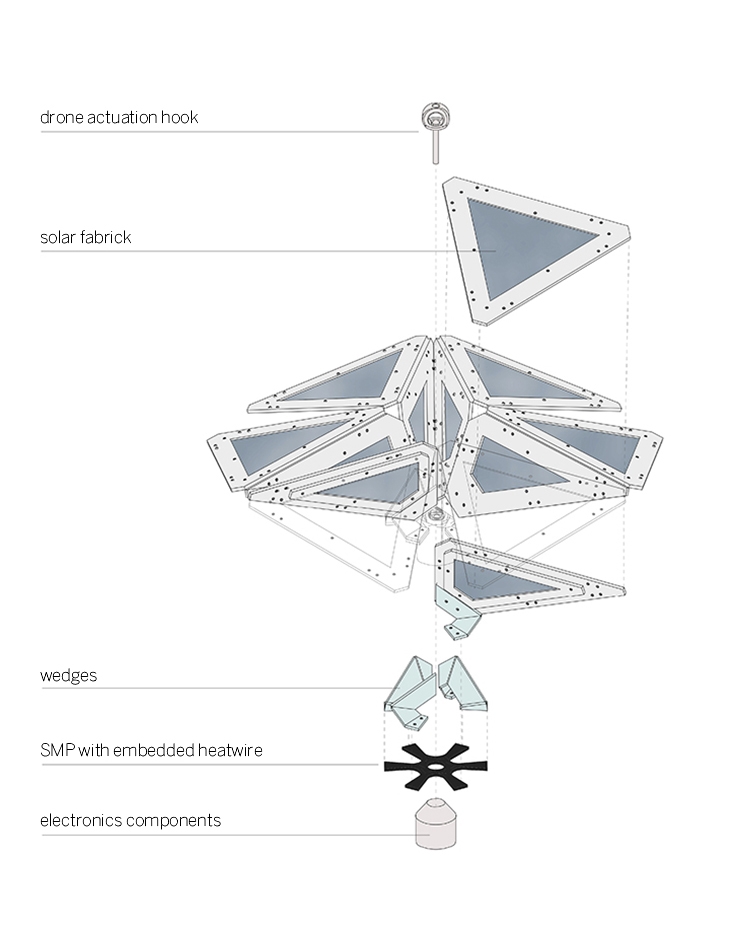 EXPLOADED AXO
EXPLOADED AXOΤranslated Geometries from efilena baseta on Vimeo.
Τranslated Geometries Video
READ ALSO: HOUSE OF THE INFINITE VT HOUSE BY ESTUDIO ARQUITECTURA CAMPO BAEZA 2014 IN CADIZ, SPAIN

